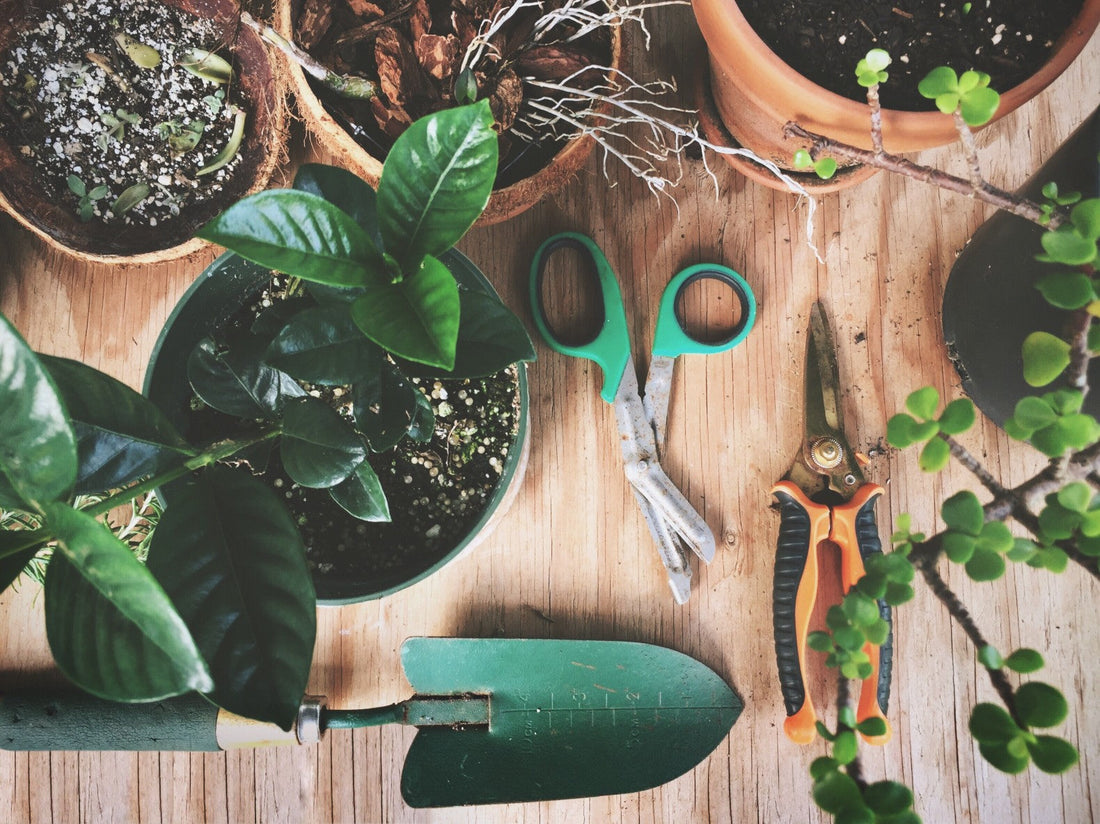If you're anything like us, you love taking advantage of the gorgeous summer sunshine and humidity by popping some of your houseplants outside to bask in all that seasonal weather! But now that the temperature is beginning to drop and autumn is knocking on our door, it's time to bring your babies back inside.
Here are a few things you can do to make the transition a success!
Go gradually.
Your plants have been enjoying peak sunlight and humidity for the last few months, so moving them right back inside without easing them into it can be a shock.
To help your plants handle this change, you want to do what you did at the start of summer to move them outside, but in reverse. Slowly move your plants from their sunniest spots into more and more shade as you get ready to bring them indoors.
Ideally, you will do this transition over a few weeks, aiming to bring your plants indoors before nighttime temperatures dip below 7-10°C. If this isn't possible or temps drop unexpectedly, you can move your plants into the sunniest spot in your house, then gradually move them back to their winter homes.
Check for pests.
Houseplant pests outside aren't such a big deal as they tend to get eaten by natural predators, but you definitely don't want to bring bugs inside to wreak havoc on the rest of your collection.
Start by giving each of your plants a really good visual inspection. Check the top and bottom of leaves, stems, and soil. If you spot a pest, now's the time to stop them in their tracks.
Mix a dollop of dish soap and a splash of peroxide in a spray bottle filled with water, spray your plant all over and wipe it down thoroughly to remove any traces of pests and larvae/eggs, which can be trickier to spot. You will want to repeat this a few times as you get ready to move your plants inside to make sure they've gone.
Plant Tonic: All-Natural Pest Control + Leaf Shine
For plants where you're not seeing any pets, it can be helpful to just give them a good rinse off anyhow as a precautionary measure.
When you do move your plants inside, try to keep them separate from your current indoor collection, just for a week or so, while keeping an eye out for pests. This transition can be stressful and pests LOVE a stressed plant. Repeat the same treatment above if you spot any hitchhikers.
Prune and re-pot.
While your plants are still outdoors, now is the perfect time to make a mess! Whether your plants need a bit of a haircut or they've outgrown their pots, take advantage of the weather to do this outside where you'll have a lot less cleanup.
Prune back any damaged foliage or spent blooms. Trimming your plants back a little at this time of year can help promote more growth during the off-season, so this can be beneficial for your plants as well.
If your plants are in need of a bigger home, use this time to help them move in! The general rule of thumb is to move up 1-2" in pot size, ie. move your 4" plants into a 5-6" pot. This will also make your spring/summer transition a little easier next year as these plants won't need to be repotted again.
Future you will be grateful!
Adjust plant care.
Moving into autumn, your plants won't need as much water as they do out in the summer sun. You can start to slow down your watering now, paying very close attention to soil moisture to guide you in whether your plants are thirsty or not.
Tip: Use a chopstick! Pretend you are baking brownies and insert a chopstick into the soil at the center of your pot. If it comes out clean, your plant is dry and likely needs water. If it comes out covered in "crumbs" ie. bits of soil, your plant is still moist beneath the surface and may not need water. Some plants want to be much drier than others before their next watering. Our plant product pages have care tips to help you make the right choice.
This is also the time of year to ease out of your fertilizing routine. In the colder seasons, plants will take a bit of a break and grow much slower, negating the need for additional nutrients from different fertilizers. Some plant owners move to a much more watered down version of their chosen fertilizer, while some stop altogether. What you want to avoid is a build up of nutrients in the soil that can do more harm than good if the plant isn't using them. For an in-depth look at fertilizing your houseplants, click here.
For your tropicals, you will want to augment humidity in the form of misting, a humidifier, or humidity tray. After being spoiled by the humidity outdoors all summer, your plants will definitely feel the difference and let you know in the form of brown tips and crispy foliage.
I hope these tips help you enjoy a smooth transition as you bring your plants inside after summer!
In some ways, I love this season of plant ownership even more than summertime. When it's chilly outside, it's so thrilling to create a thriving jungle inside. Can't wait!

